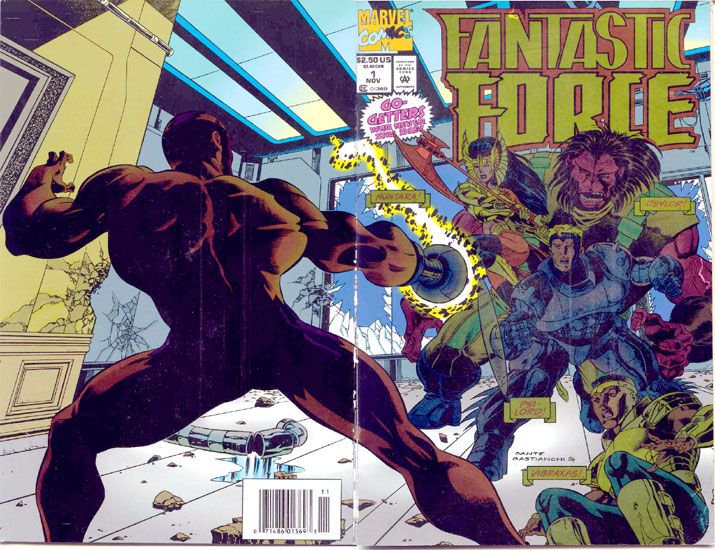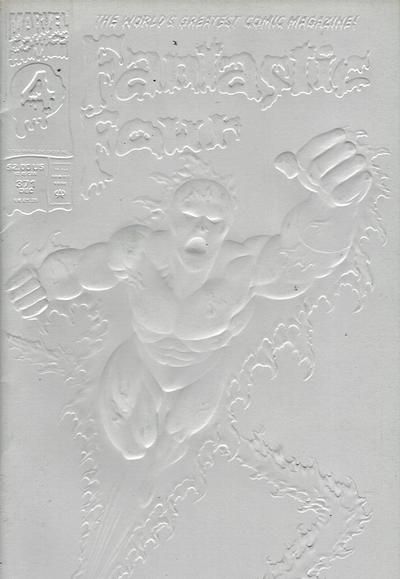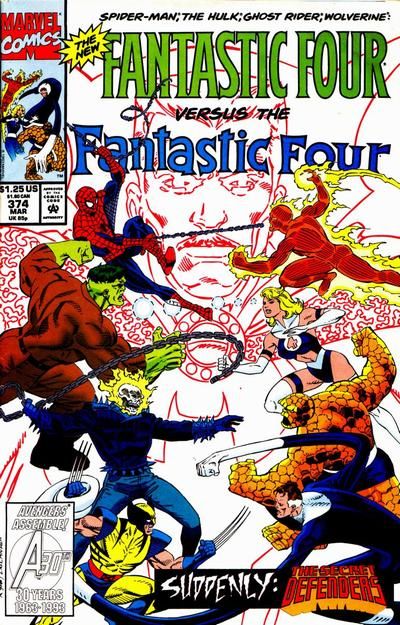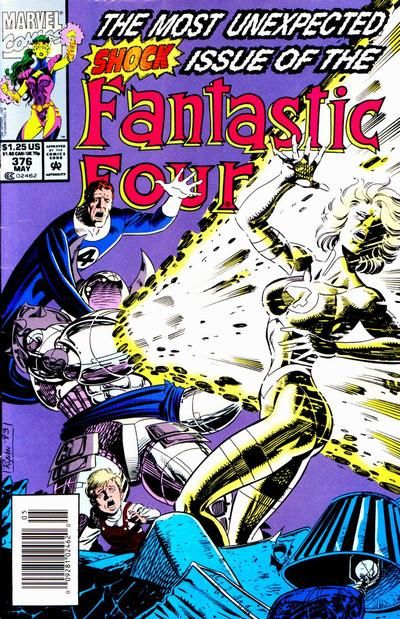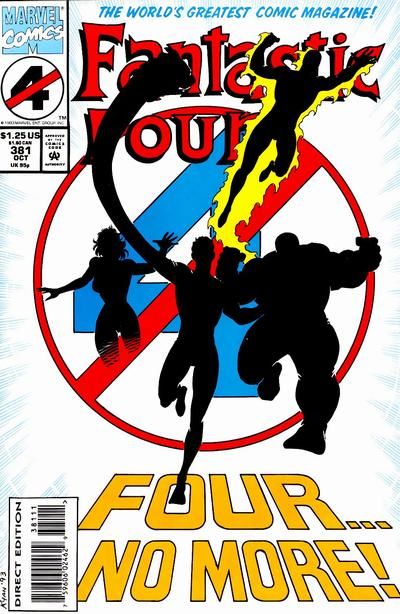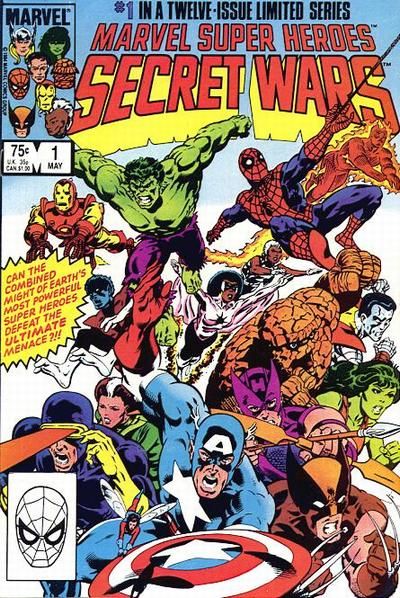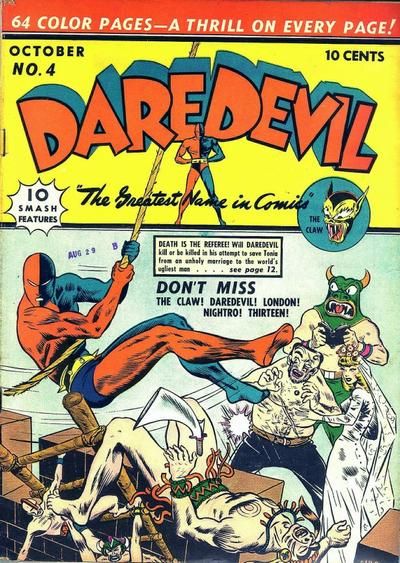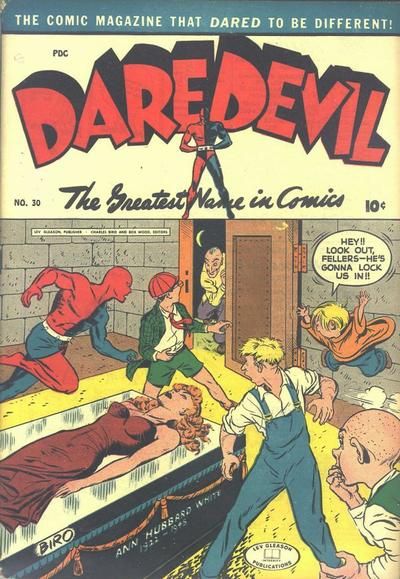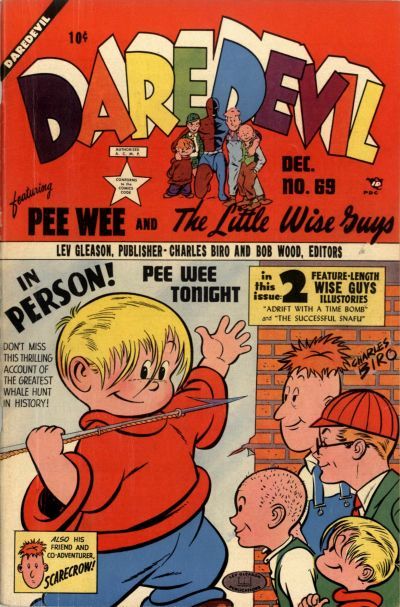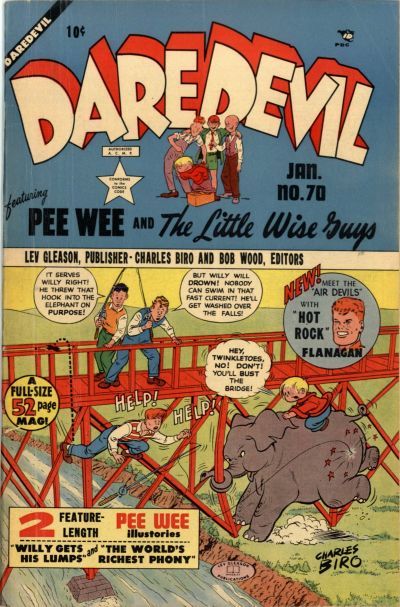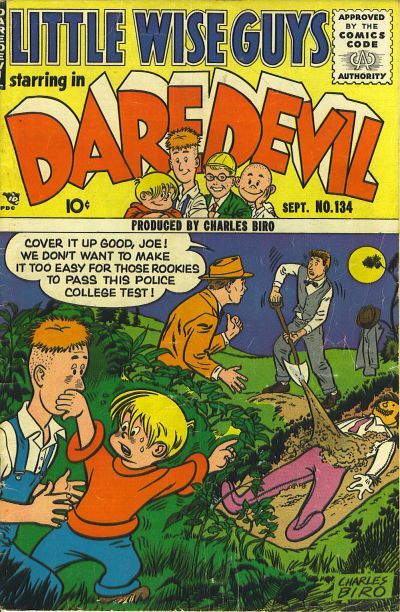This is the ninetieth in a series of examinations of comic book urban legends and whether they are true or false. Click here for an archive of the previous eighty-nine. Click here for a similar archive, only arranged by subject.
Let's begin!
COMIC URBAN LEGEND: False rumors about a new comic book resulted in the creation of that very comic book.
STATUS: True.
The 1990s were a strange decade for comic books, especially the early years, where the booming speculator craze in the direct market brought comics to incredibly high levels of sales.
Of course, with the increase in sales overall, books that weren't selling as well were highly scrutinized, and it was around this time that the era of the "stunt" comic came about.
The Death of Superman is clearly the biggest example of this, where DC's fairly moribund (sales-wise) Superman franchise was suddenly their biggest seller.
A book where the stunt effect was in full force was in Marvel's Fantastic Four. The book was selling decently enough, but it was not doing a very good percentage of sales on newstands. If it did not raise its numbers, it was going to be dropped from newstand distribution.
The idea of "The Worlds Greatest Comic Magazine" not being sold on newstands was quite distressing to the writer of the comic (who also happened to be the Editor-in-Chief of Marvel, Tom DeFalco), so he began trying a number of dramatic stunts to raise sales on the title.
He gave the book a special embossed cover...
He had the "new" Fantastic Four (Hulk, Ghost Rider, Spider-Man and Wolverine), who had a quick (and very high-selling) run on the title a couple of years earlier show up....
These were both released (or already written) when the Death of Superman came out, and took the industry by storm.
Now, DeFalco knew the best way to raise sales on the Fantastic Four.
Still, there continued to be SHOCKING EVENTS before then...
When rumors first began circulating that DeFalco was going to kill off a member of the team, it was soon coupled with another rumor, that DeFalco was planning on cancelling the Fantastic Four and relaunching the title with an all-new #1 called Fantastic FORCE, a la New Mutants being relaunched with a very high-selling #1 as X-Force.
The rumor about a member dying came true in 1993 when Mr. Fantastic was killed off in #381...
However, the Fantastic Force rumor was never true. But at the same time, Tom DeFalco (and his top Editor, Mark Gruenwald) figured that the Fantastic Force rumor was gaining the book some attention, so they let it make the rounds.
And make the rounds did. You practically couldn't read any comic magazine without reading about the Fantastic Force rumor. This was just the beginning of the nascent online comic community, and the Fantastic Force rumor was one of the first ones to really make the rounds on the internet.
Eventually, as 1993 wore on, DeFalco came to the realization - people are talking about this so much, so why NOT do a Fantastic Force title? Not as a replacement for Fantastic Four, but rather, as a spin-off.
Soon, DeFalco began to sow seeds for a spin-off title, and in late 1994 (with a false start, after the original creative team left over creative differences), Fantastic Force was launched with Tom Brevoort and Mike Kanterovich as the writers and Dante Bastianoni as the artist.
The title lasted until 1996.
So see, folks, sometimes, dreams (and false rumors) DO come true!
Thanks to Tom Brevoort for his help filling in the blanks.
COMIC URBAN LEGEND: The original Secret Wars had only two sentences of dialogue end in a period.
STATUS: False.
When reader Robert Eddleman wrote in with this one, it seemed extremely hard to believe, almost to the point of being a joke.
The joke was on me, though, when I actually took a look at Secret Wars.
If you recall, the original Secret Wars was essentially a toy tie-in, with the comic released to coincide with the release of a Mattel toy line starring Marvel superhero characters.
Marvel Editor-in-Chief Jim Shooter tapped himself to write the twelve-part maxi-series, which featured a wide selection of Marvel heroes and villains being sent to a mysterious planet by a being called "The Beyonder," and then forced to fight against each other.
I do not think even the biggest advocate of the series would suggest that it was much more than an extended action sequence, and writer Shooter appeared to go along with that notion, if you look at his dialogue.
Eddleman's figure of two sentences was wrong, but what was stunning to me was how much it was. It was off by only TWELVE sentences!
Yes, that's right, only FOURTEEN sentences of dialogue in the entirety of the Secret Wars series ended with a period. Every other sentence ended with either a question mark or an exclamation point!!
I suppose Shooter's intentions were that, since it basically WAS an action movie, it would make the series seem more action-packed if everyone was constantly shouting. In addition, the style of having everyone speak in exclamation marks was quite common in the Marvel Comics of the 60s, especially Fantastic Four.
What's even more striking is that the fourteen sentences with periods belong to just about three characters only.
Doctor Doom himself has about ten of the sentences, with Professor X using up most of the rest (Doctor Octopus randomly gets a sentence). So folks like Spider-Man, Iron Man, Captain America and Mr. Fantastic go the ENTIRE series with almost all their sentences ending in exclamation points.
It is bizarrely hilarious.
To put it into perspective, I checked out four issues of Marvel Comics released the same month as Secret Wars #1.
The Fantastic Four issue went over fourteen sentences of dialogue with a period by page six.
The Captain America went over fourteen sentences by page nine.
The Amazing Spider-Man issue only had ten sentences (Spidey was understandably excited over his new costume...hehe) for that issue. I checked the next issue, though, to see if it was an aberration, and the next issue went over fourteen sentences by page six.
The Iron Man issue went over fourteen sentences by page THREE.
So, yeah, Secret Wars was freakishly heavy on the exclamation points and question marks, don't you think?!?!?!?!?!?!!?!?
Thanks to Robert for the suggestion!
COMIC URBAN LEGEND: A superhero once ceased appearing in his own comic book!
STATUS: True.
We have learned about how a superhero once lost the cover of his comic book to his own dog (refresh your memory here).
We have learned about how comic companies were hesitant to pay the extra money it cost to launch new titles (refresh your memory here).
However, it is interesting to see how a mixture of the two events conspired to kick a superhero out of his own title!!
Daredevil was the lead superhero from Lev Gleason Publications. It already had an unusual pedigree, with a first issue designed more as a one-shot (Daredevil Fights Hitler!) and a second issue that (as related in a previous installment here) was literally done over a weekend, but for the most part, Daredevil was standard superhero fare.
However, writer/artist Charlie Biro soon added a supporting group of characters called the Little Wise Guys, who were very similar to DC's the Newsboy Legion.
They soon became very popular (also, Biro made a move that was quite shocking for the time - he killed off one of the Little Wise Guys soon after they first appeared!).
By the end of the 1940s, Daredevil's role eventually devolved to the point where he was just introducing Little Wise Guys stories.
Finally, with issue #70, even that pretext was dropped (note how Daredevil disappears from the cover without any real change in the make-up of the cover?)
Daredevil returned for a couple of issues in the late #70s/early #80s, but then disappeared again, never to be seen again.
The title lasted another sixty issues and six years without Daredevil!!!
That's gotta be pretty depressing for a superhero, eh?
Okay, that's it for this week!
Feel free to drop off any urban legends you'd like to see featured!

